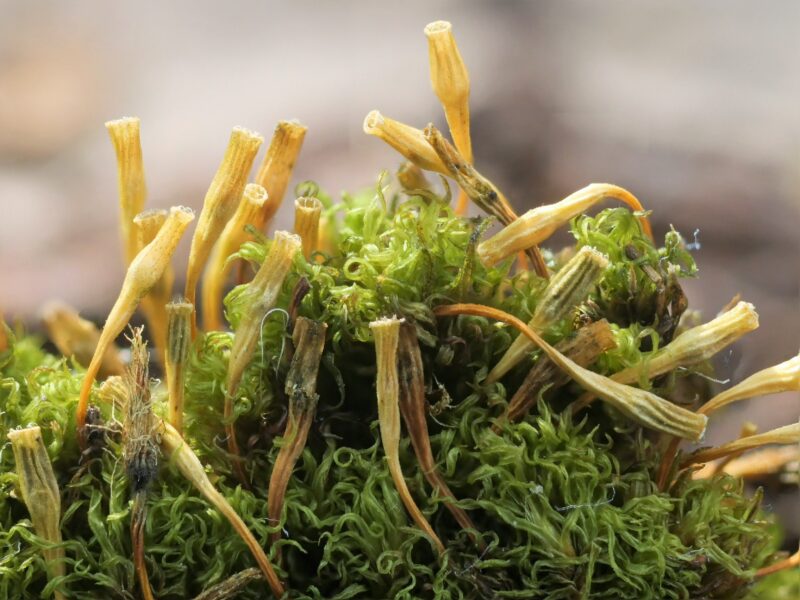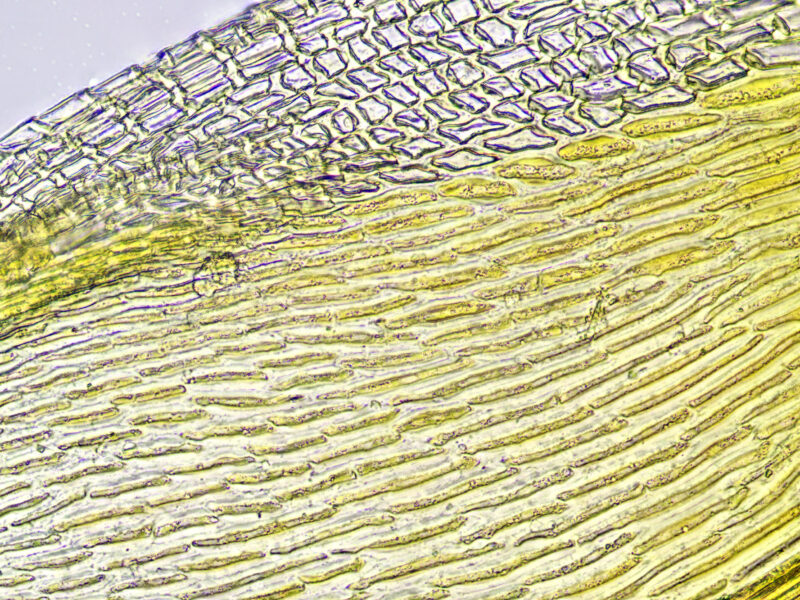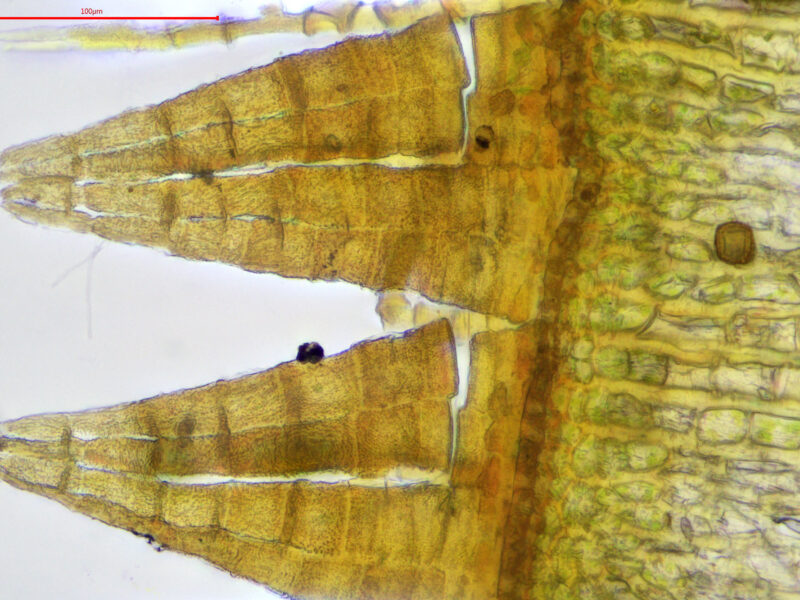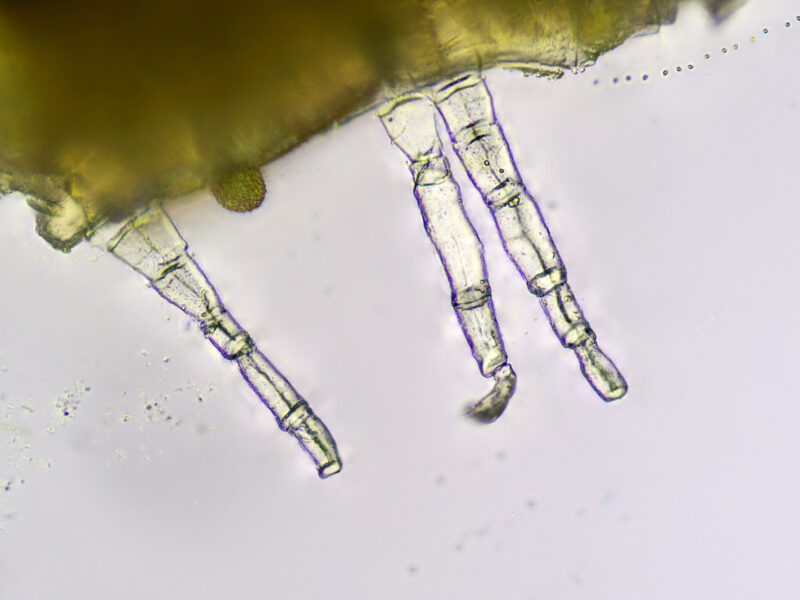Identification notes
In 2017, Tom Blockeel published an article which explained why the species known as U. crispa in Smith’s 2008 moss flora appeared to be ill-defined and readily confused with U. bruchii. Since that then, British and Irish bryologists have slowly been getting to grips with the three species that U. crispa s.l. became – U. intermedia, U. crispula and U. crispa s.str.
Of course the first edition of the Field Guide and the Atlas both predate the segregation and still treat the three species as one, which can be very confusing for anyone unfamiliar with the history of the taxonomy.
If you’d like to find U. intermedia, a couple of important points need to be borne in mind. First and foremost, capsules must be in good condition – ideally mature and recently dehisced. This is because examination of the capsules under a compound microscope is essential and old ones quickly lose the very delicate inner peristome teeth (the much larger outer teeth usually often persist for much longer but in the case of U. intermedia and U. crispula they are not as important for identification purposes). Also, you stand a much better chance of finding U. intermedia if you search for it in July and August. Then its recently dehisced capsules will be much more obvious than those of U. crispula, which ripen earlier (from May to July). In practice, you can often still find capsules with a few intact inner peristome teeth a few months beyond the main season of capsule maturation, but by then plants are less conspicuous in the field and often more challenging to identify back at home.
What are you looking for in the field? Cushions of U. intermedia are often found with other Ulota species and typical epiphytes of base-rich bark e.g. on sycamore, ash, poplars, grey willow, hazel and field maple etc. They tend to be a bit smaller than those of U. bruchii, and capsules in the dry state are weakly contracted just below the mouth – this because they are not as strongly ribbed as U. crispa s.str., which looks quite strongly contracted just below the mouth when dry. Don’t bother trying to identify wet Ulota plants in the field! Capsules inflate when hydrated and their shape is not helpful in this state.
Back home, you’ll need to hydrate a capsule which has intact inner peristome teeth (you can see them with a hand-lens), remove as many spores as you can and cut the capsule longitudinally. Mount one half outer side up, the other inner side up on a slide under a cover slip and examine the cells. In U. intermedia (and U. crispula) the capsule ribs (parallel lines of large rectangular cells with thick, often yellowish walls) are separated from mouth of the capsule by 2-3 rows (occasionally only 1) of small rounded cells. In U. crispa s.str. (and U. bruchii) the ribs reach right up to the capsule mouth. Now focus on the endostome teeth – you’ll probably have to adjust your contrast and rack your focus up and down to see them as they are colourless and very fragile. In U. intermedia the endostome teeth are uniseriate and have very thick cross-walls. However, beware confusion at this stage with U. crispa s.str, which fruits at a similar time of year and can also have thickened cross-walls. U. crispula has partially biseriate endostome teeth which have thin cross-walls.
💡 if you find that the exostome teeth spring up and obscure the endostome teeth on your slide, try mounting the dry capsule halves on a slide, hold the coverslip down firmly, place a drop of water along its edge and allow a small amount to travel under the coverslip whilst maintaining some pressure to keep the exostome teeth folded back.
For lots more useful information, Tom’s article is strongly recommended and you can download a PDF by following the link at the bottom of this page.
Read the Field Guide account











